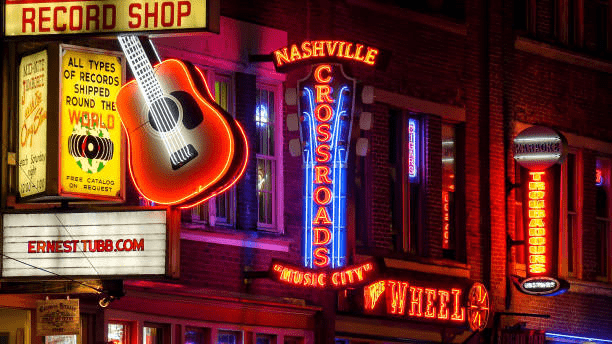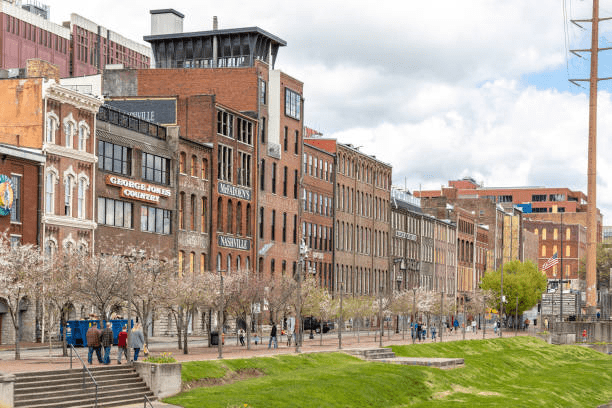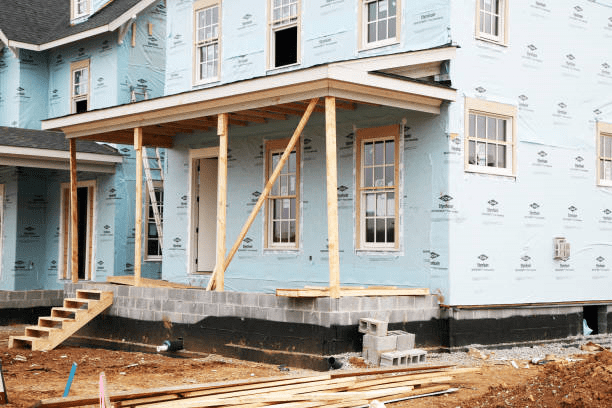Nashville's Architectural Melting Pot: A Journey Through Time and Style
Nashville's architectural landscape is a vibrant tapestry that reflects the city's rich history, diverse culture, and rapid growth. From antebellum mansions to sleek modern designs, Nashville boasts a wide array of architectural styles that contribute to its unique charm and character. Exploring these architectural styles offers a glimpse into the city's evolution over time and the various influences that have shaped its built environment.
One of the most prominent architectural styles in Nashville is Greek Revival, which gained popularity in the mid-19th century. This style is characterized by grandeur, symmetry, and ornate detailing, often featuring prominent columns, pediments, and elaborate friezes. The Tennessee State Capitol, completed in 1859, exemplifies the grandeur of Greek Revival architecture with its imposing facade and iconic cupola, serving as a symbol of the state's political and architectural heritage.

Another significant architectural style in Nashville is Victorian, which flourished during the late 19th century. Victorian architecture encompasses a range of sub-styles, including Queen Anne, Italianate, and Second Empire, each characterized by its distinctive features and decorative elements. The historic Germantown neighborhood showcases many well-preserved examples of Victorian architecture, with colorful facades, intricate woodwork, and ornate detailing that evoke a sense of nostalgia and charm.
In addition to its historic architectural styles, Nashville also boasts a vibrant collection of Art Deco buildings dating from the early to mid-20th century. This sleek and modern style is characterized by geometric shapes, bold lines, and decorative motifs inspired by ancient cultures and technological advancements. The Frist Art Museum, housed in a former post office building from the 1930s, is a prime example of Art Deco architecture in Nashville, with its distinctive facade adorned with intricate reliefs and stylized ornamentation.
As Nashville experienced rapid urbanization and growth in the 20th century, mid-century modern architecture emerged as a dominant style in the city's built environment. Characterized by clean lines, open floor plans, and an emphasis on functional design, mid-century modern buildings reflect the optimism and innovation of the post-war era. The iconic John Seigenthaler Pedestrian Bridge, completed in 1906 and later renovated in a mid-century modern style, serves as a striking example of this architectural aesthetic, with its sleek steel trusses and minimalist design.
In recent decades, Nashville has witnessed a resurgence of contemporary architecture, with a focus on innovative design, sustainability, and urban renewal. The city's skyline has been transformed by sleek high-rise condominiums, mixed-use developments, and cutting-edge cultural institutions that reflect Nashville's status as a modern and progressive city. The award-winning Country Music Hall of Fame and Museum, designed by architect Tuck Hinton, is a notable example of contemporary architecture in Nashville, with its striking glass facade and dynamic interior spaces that celebrate the city's musical heritage.
Overall, Nashville's architectural styles reflect the city's rich history, cultural diversity, and ongoing evolution as a dynamic urban center. From its antebellum mansions to its sleek modern skyscrapers, Nashville's built environment tells a story of growth, innovation, and resilience that continues to shape the city's identity and inspire its residents and visitors alike.
From antebellum mansions to sleek modern designs, Nashville boasts a wide array of architectural styles that contribute to its unique charm and character. Exploring these architectural styles offers a glimpse into the city's evolution over time and the various influences that have shaped its built environment.
One of the most prominent architectural styles in Nashville is Greek Revival, which gained popularity in the mid-19th century. This style is characterized by grandeur, symmetry, and ornate detailing, often featuring prominent columns, pediments, and elaborate friezes. The Tennessee State Capitol, completed in 1859, exemplifies the grandeur of Greek Revival architecture with its imposing facade and iconic cupola, serving as a symbol of the state's political and architectural heritage.
Another significant architectural style in Nashville is Victorian, which flourished during the late 19th century. Victorian architecture encompasses a range of sub-styles, including Queen Anne, Italianate, and Second Empire, each characterized by its distinctive features and decorative elements. The historic Germantown neighborhood showcases many well-preserved examples of Victorian architecture, with colorful facades, intricate woodwork, and ornate detailing that evoke a sense of nostalgia and charm.

In addition to its historic architectural styles, Nashville also boasts a vibrant collection of Art Deco buildings dating from the early to mid-20th century. This sleek and modern style is characterized by geometric shapes, bold lines, and decorative motifs inspired by ancient cultures and technological advancements. The Frist Art Museum, housed in a former post office building from the 1930s, is a prime example of Art Deco architecture in Nashville, with its distinctive facade adorned with intricate reliefs and stylized ornamentation.
As Nashville experienced rapid urbanization and growth in the 20th century, mid-century modern architecture emerged as a dominant style in the city's built environment. Characterized by clean lines, open floor plans, and an emphasis on functional design, mid-century modern buildings reflect the optimism and innovation of the post-war era. The iconic John Seigenthaler Pedestrian Bridge, completed in 1906 and later renovated in a mid-century modern style, serves as a striking example of this architectural aesthetic, with its sleek steel trusses and minimalist design.
In recent decades, Nashville has witnessed a resurgence of contemporary architecture, with a focus on innovative design, sustainability, and urban renewal. The city's skyline has been transformed by sleek high-rise condominiums, mixed-use developments, and cutting-edge cultural institutions that reflect Nashville's status as a modern and progressive city. The award-winning Country Music Hall of Fame and Museum, designed by architect Tuck Hinton, is a notable example of contemporary architecture in Nashville, with its striking glass facade and dynamic interior spaces that celebrate the city's musical heritage.

Nashville's architectural styles reflect the city's rich history, cultural diversity, and ongoing evolution as a dynamic urban center. From its antebellum mansions to its sleek modern skyscrapers, Nashville's built environment tells a story of growth, innovation, and resilience that continues to shape the city's identity and inspire its residents and visitors alike.



